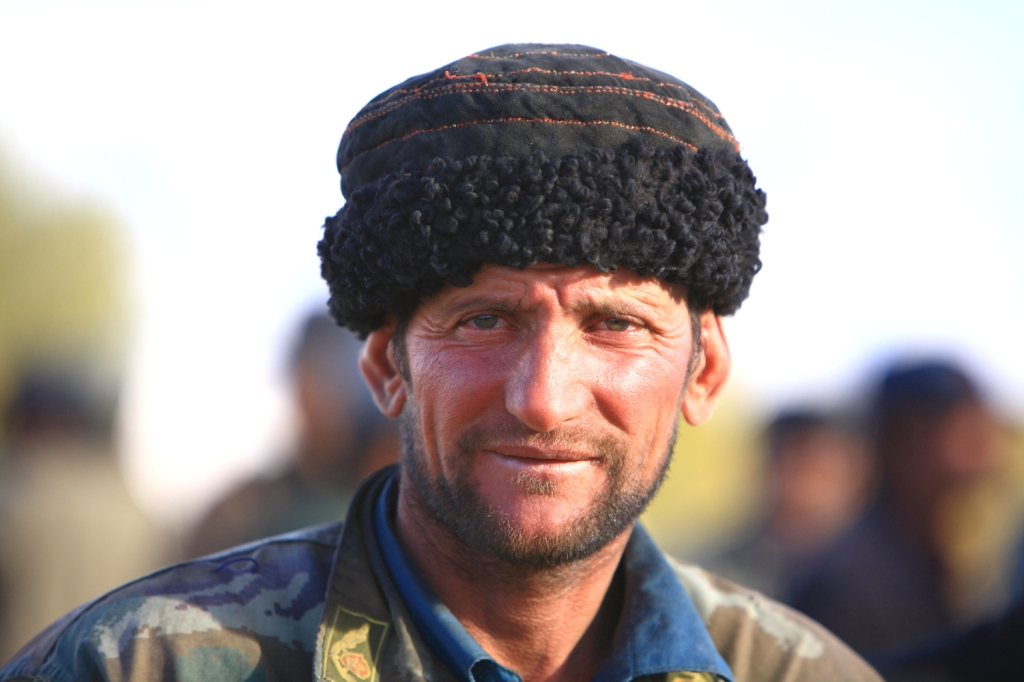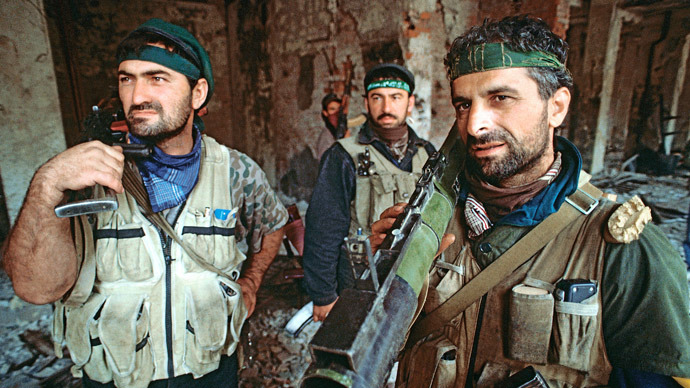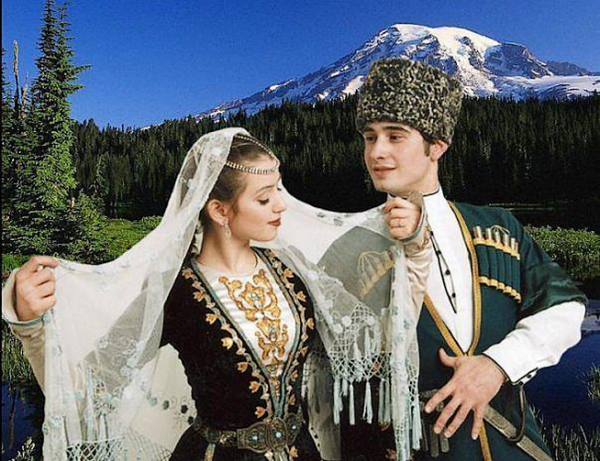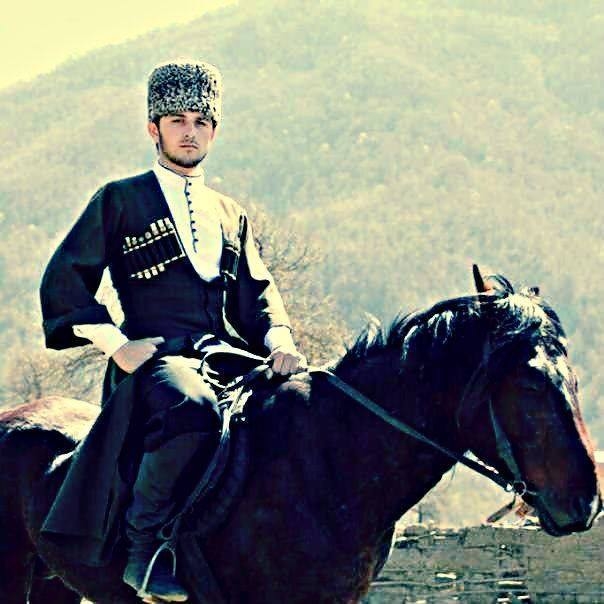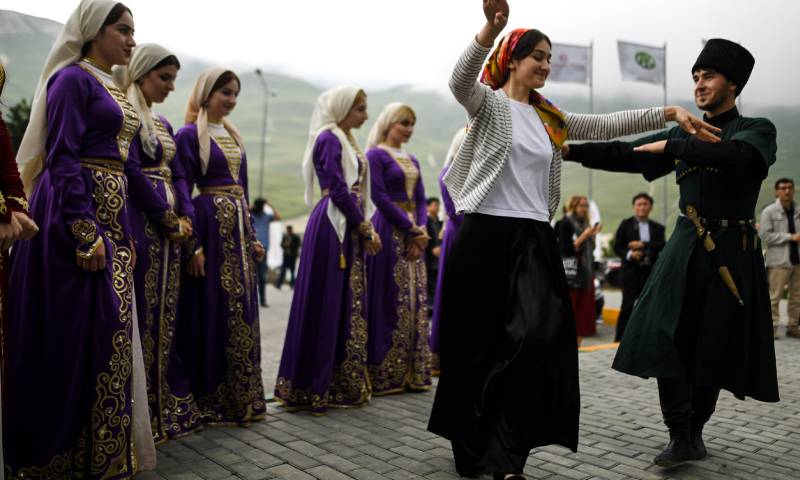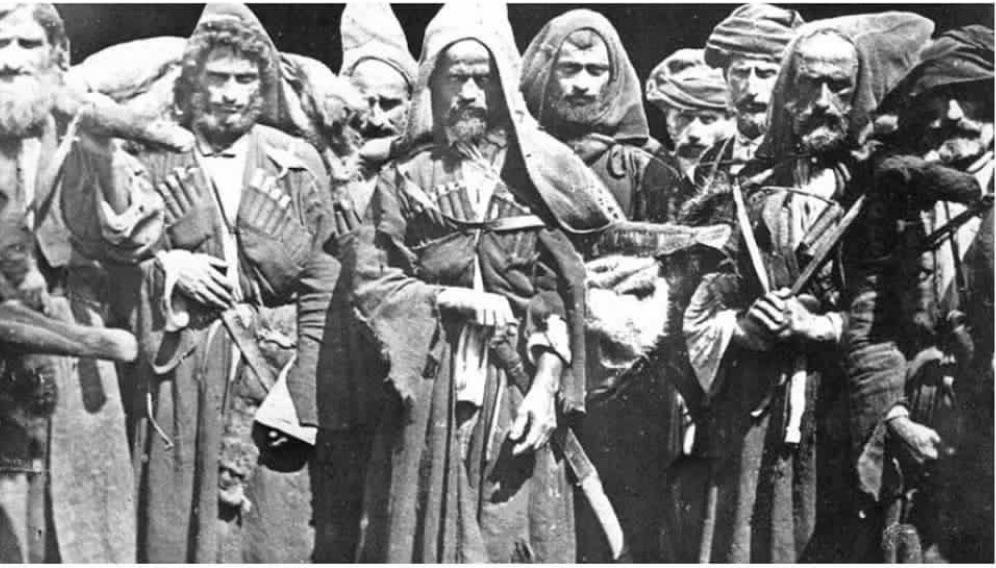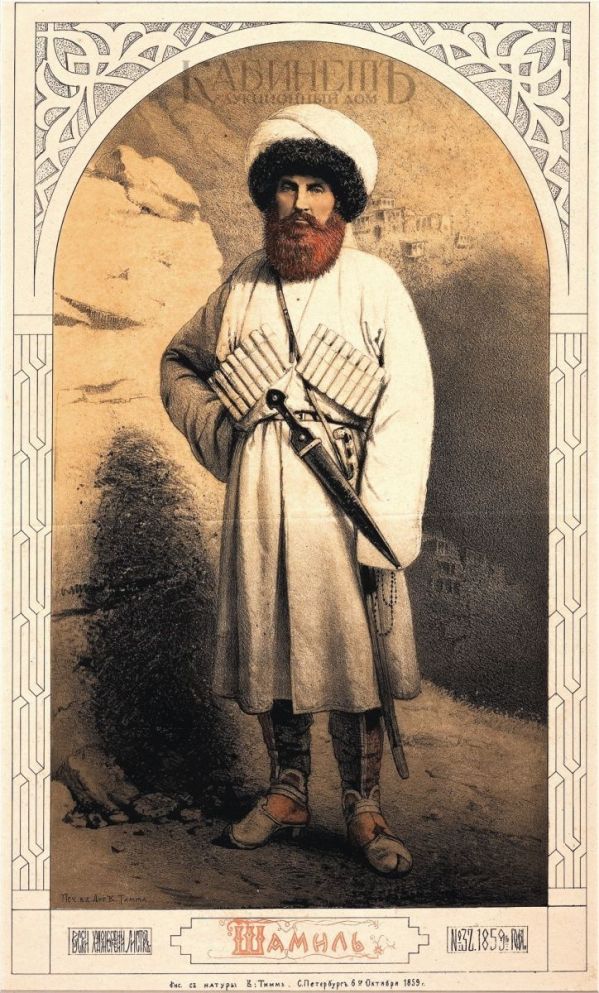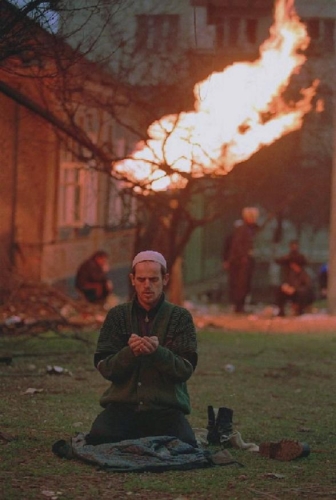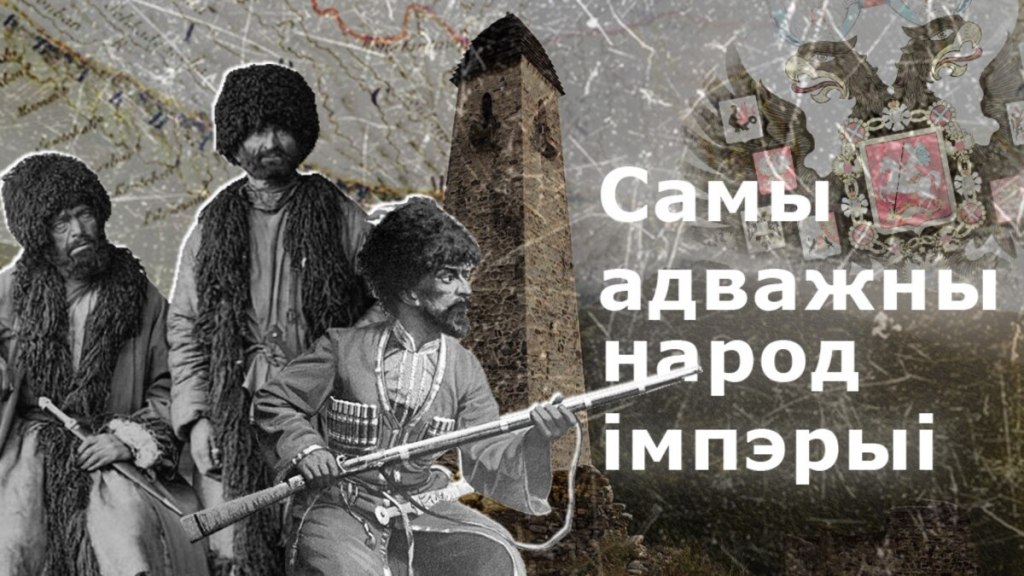The Chechens (/ˈtʃɛtʃɛnz, tʃəˈtʃɛnz/; Chechen: Нохчий, Noxçiy, Old Chechen: Нахчой, Naxçoy), historically also known as Kisti and Durdzuks, are a Northeast Caucasian ethnic group of the Nakh peoples native to the North Caucasus. They are the largest ethnic group of the North Caucasus and refer to themselves as Nokhchiy; singular Nokhchi, Nokhcho, Nakhchuo or Nakhtche). The vast majority of Chechens today are Muslims and live in Chechnya, a republic of Russia. The North Caucasus has been invaded numerous times throughout history. Its isolated terrain and the strategic value outsiders have placed on the areas settled by Chechens has contributed much to the Chechen community ethos and helped shape its national character. Chechen society has traditionally been egalitarian and organized around many autonomous local clans, called teips.
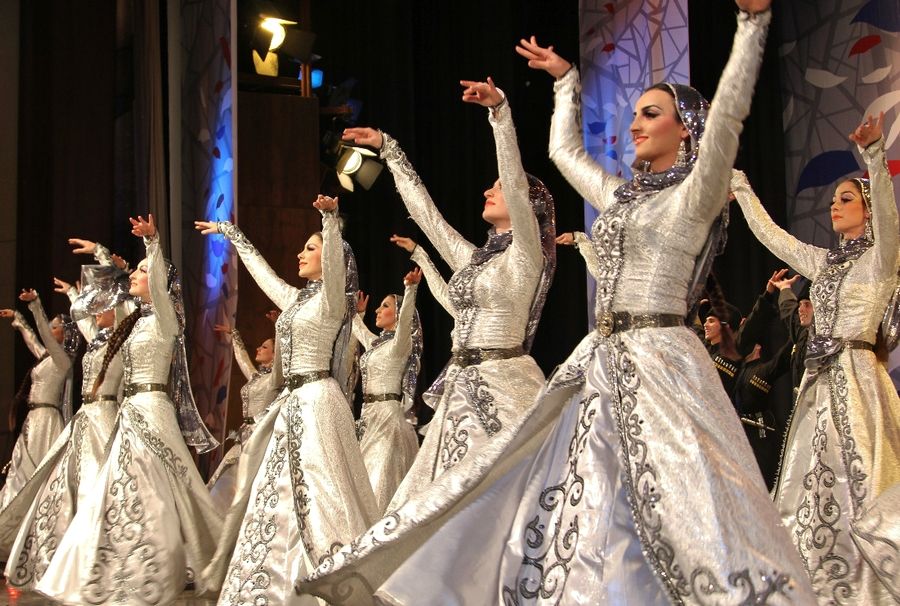
A teip (also taip, teyp; Nakh [ˈtajpə]: family, kin, clan, tribe) is a Chechen and Ingushtribal organization or clan, self-identified through descent from a common ancestor or geographic location. It is a sub-unit of the tukkhum and shahar. There are about 150 Chechen and 120 Ingush teips. Teips played an important role in the socioeconomic life of the Chechen and Ingush peoples before and during the Middle Ages, and continue to be an important cultural part to this day. Teips being sub-units of tukkhums, members of the same teip are traditionally thought to descend from a common ancestor, and thus are considered distant blood relatives. Teip names were often derived from an ancestral founder. As is also true of many other North Caucasian peoples, traditionally Chechen and Ingush men were expected to know the names and places of origin of ancestors on their father’s side, going back many generations, with the most common number being considered as 7. Many women also memorized this information, and keener individuals can often recite their maternal ancestral line as well. The memorization of the information serves as a way to impute clan loyalty to younger generations. Among peoples of the Caucasus, traditionally, large scale land disputes could sometimes be solved with the help of mutual knowledge of whose ancestors resided where and when.

The Nakh peoples are a group of North Caucasian peoples identified by their use of the Nakh languages and other cultural similarities. These are chiefly the ethnic Chechen (including the Chechen sub-ethnos, the Kists, in Georgia), Ingush and Bats peoples of the North Caucasus, including closely related minor or historical groups. “Nakh peoples” and “Vainakh peoples” are two terms that were coined by Soviet ethnographers such as the Russian linguist Nikolai Yakovlev [ru] and Ingush ethnographer Zaurbek Malsagov. The reasoning behind the creation of these terms was to unite the closely related nations of Chechen and Ingush into one term. The terms “Vainakh” (our people) and “Nakh” (people) were first used as a term to unite two peoples in 1928. It was subsequently popularized by other Soviet authors, poets, and historians such as Mamakaev and Volkova in their research. According to the historian Victor Schnirelmann, the terms “Vainakh” and “Nakh” were introduced more actively during the period from the 1960s through the 1980s.
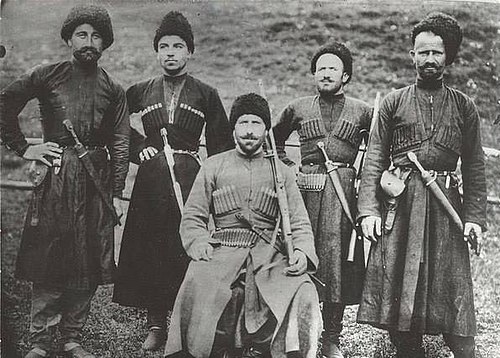
Chechen Kurds or Kurdified Chechens are ethnic Chechens who went through a process of Kurdification after fleeing to Kurdistan during and after the Russian conquest of the Caucasus in the 1860s. Today, these Chechens are perceived as being of the “Chechen tribe” and “Lezgî tribe”. Chechen families were first settled in other regions of the Ottoman Empire like the Balkans, but were since moved to Kurdistan by the Sublime Porte. The Ottomans planted Chechen refugees in Kurdistan and Western Armenia to change the demographics, since they feared Armenian separatism and, later on, Kurdish separatism. Today, the Chechen population in Turkish Kurdistan is scattered among the Kurdish population and has been assimilated into it.[10]About 200 to 300 Kurdified Chechen families live in Saidsadiq District, some 100 families in Penjwen District and about 200 in Sulaymaniyah city in Iraqi Kurdistan.
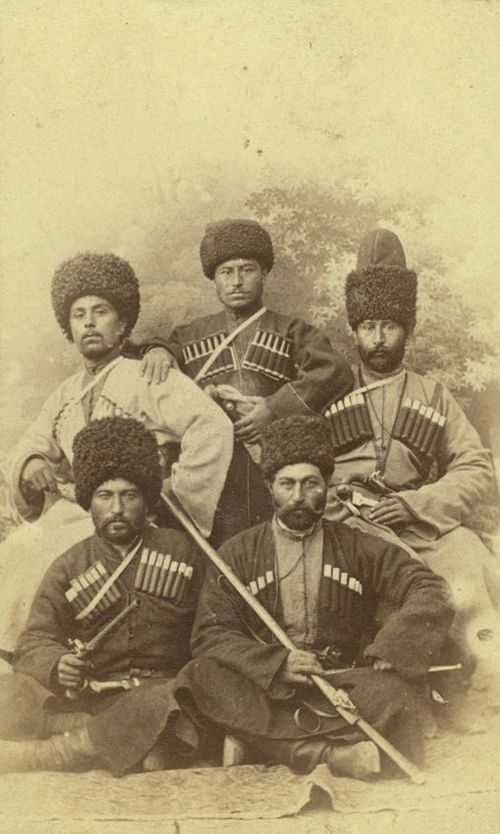
Chechnya (Russian: Чечня́, IPA: [tɕɪtɕˈnʲa]; Chechen: Нохчийчоь, romanized: Noxçiyçö), officially the Chechen Republic,[a] is a republic of Russia. It is situated in the North Caucasus of Eastern Europe, close to the Caspian Sea. The republic forms a part of the North Caucasian Federal District, and shares land borders with the country of Georgia to its south; with the Russian republics of Dagestan, Ingushetia, and North Ossetia-Alania to its east, north, and west; and with Stavropol Krai to its northwest. The republic covers an area of 17,300 square kilometres (6,700 square miles), with a population of over 1.5 million residents as of 2021. It is home to the indigenous Chechens, part of the Nakh peoples, and of primarily Muslim faith. Grozny is the capital and largest city.
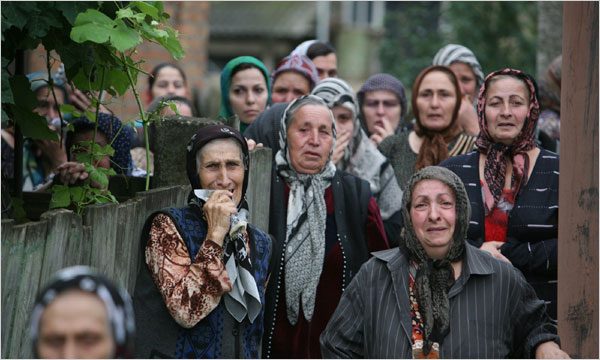
The Chechens, who call themselves noxchii (singular noxchi or noxchuo ) and their land Noxchiin moxk (“Chechen land”), are the largest indigenous nationality of the North Caucasus. They speak a language of the Nakh-Daghestanian, or East Caucasian language family that is native to the Caucasus, and have lived in or near their present locations for millennia. Chechnya is a small territory of about 5,000 sq. mi. (13,000 sq. km.) corresponding to about 85 percent of the historical Chechen lands (the rest is in today’s Daghestan), with some non-Chechen steppe land added in the north. The lower North Caucasus foothills and adjacent plain including the capital city of Grozny (Soelzha-ghaala “Sunzha City” in Chechen, a name still much in use despite its official renaming to Djohar in 1996) are the most densely populated part of Chechnya. The Chechens numbered just over a million in mid-2000 according to a Danish Refugee Council census. Somewhat over half of the world’s Chechens live in Chechnya; most of the others are scattered throughout Russia, several tens of thousands live in Kazakhstan and nearby, and a few tens of thousands in Jordan, Turkey, and Syria.
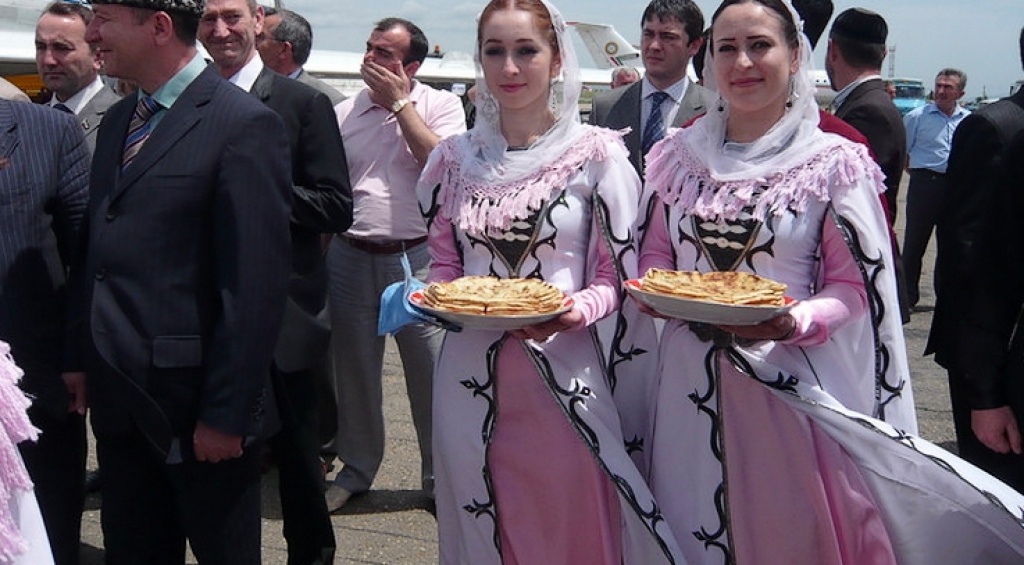
Chechnya, also spelled Chechnia or Chechenia, republic in southwestern Russia, situated on the northern flank of the Greater Caucasus range. Chechnya is bordered by Russia proper on the north, Dagestan republic on the east and southeast, the country of Georgia on the southwest, and Ingushetiya republic on the west. In the early 21st century, more than a decade of bitter conflict had devastated the republic, forced the mass exodus of refugees, and brought the economy to a standstill. Area 4,750 square miles (12,300 square km). Pop. (2008 est.) 1,209,040. Chechnya falls into three physical regions from south to north. In the south is the Greater Caucasus, the crest line of which forms the republic’s southern boundary. The highest peak is Mount Tebulosmta (14,741 feet [4,493 metres]), and the area’s chief river is the Argun, a tributary of the Sunzha. The second region is the foreland, consisting of the broad valleys of the Terek and Sunzha rivers, which cross the republic from the west to the east, where they unite. Third, in the north, are the level, rolling plains of the Nogay Steppe.
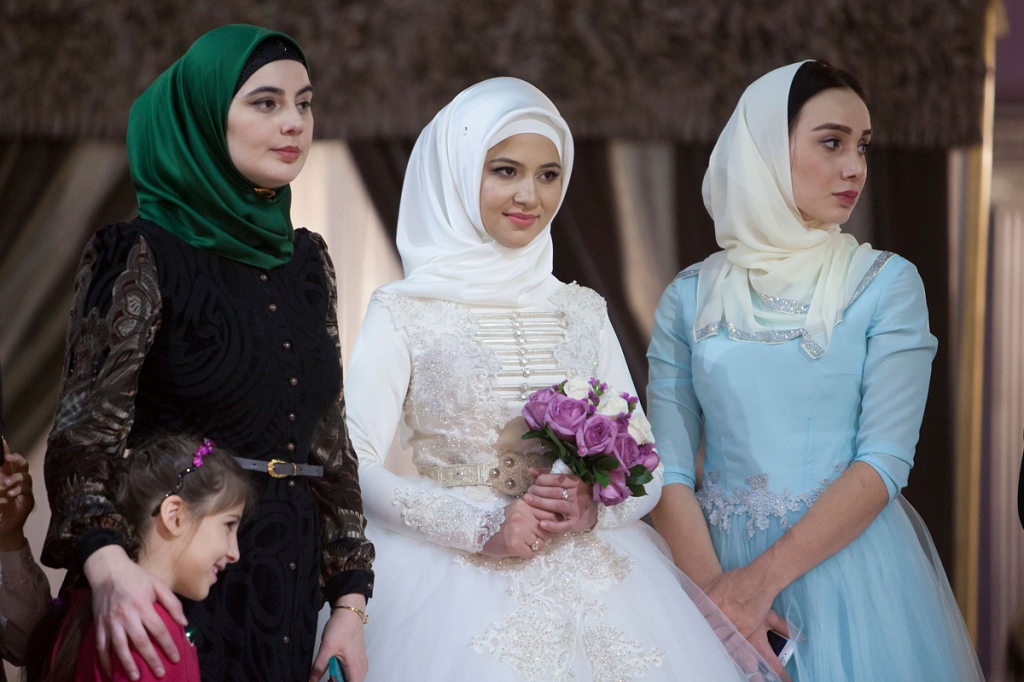
The Chechens are one of the oldest indigenous ethnic groups of the Caucasus. They belong to the Caucasian-Balkan type of the Europeoid race. Their language is Chechen, which together with the related language of the neighbouring Ingush people forms the so-called Vaynakh branch of the Ibero-Caucasian language group. Chechens refer to themselves as “Nokhcho”; besides Chechnya they live also in the Khasavyurt district in the western part of Dagestan, in Ingushetia, and in the Akhmet district of northern Georgia. The earliest preserved references to the ancestors of today’s Chechens come from the 7th century A.D. Armenian Geography. Georgian chronicles from the 13th – 14th centuries A.D. also refer to Dzurdzuks, which was the common name for all Vaynakh tribes in medieval Georgia.
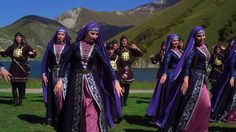
The Chechens (Nokhchii, singular Nokhchuo) inhabit a small territory in the Caucasus Mountains between the Russian and Georgian republics. Throughout their long history in the Caucasus Mountains, their strong sense of national pride has kept them prepared to fight to retain their homeland. The mountainous territory has protected them not only from enemies but from outside influences in general. Thus, the Chechens have retained many traditional customs and practices. Throughout the 19th and 20th centuries, the Chechen people and their territory have been threatened. In particular, the Chechens have struggled against Russian interference. During the 19th century, the Chechens joined other peoples of the North Caucasus to defend their territories from Russian attack. These struggles, known as the Caucasian Wars, lasted over 70 years. The Chechens gained a reputation for being the most determined, skillful, and aggressive fighters among the North Caucasian peoples. Ultimately, the Russian forces, which substantially outnumbered the North Caucasian fighters, were victorious. The Chechens and others who were involved in the wars were brutally repressed, and many were killed as the Russians attempted to consolidate their power in the territory. Large numbers of Chechens were forced to flee, with many emigrating to Turkey.
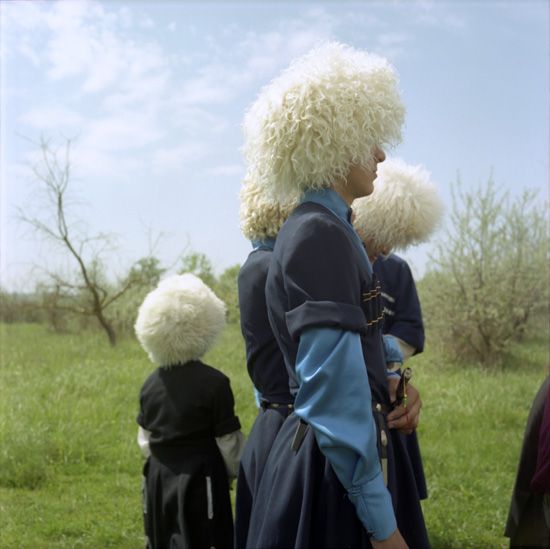
The Chechens are a Caucasian ethnic group which originated from the North Caucasus region, Eastern Europe. They were named after a Russian village referred to as Chechen-Aul. Chechens refer to themselves as Vainakhs meaning “our people.” The term “Vainakh” is used by both the Chechen and Ingush people. A large number of Chechens currently live in the Chechen Republic, which is a Russian federal state. They have settled around the isolated terrain of the Caucasus Mountains. The Chechens are egalitarian and organized in local clan groups known as teips. As much as most Chechens live in Chechnya, others are found in Dagestan, Moscow, and Ingushetia located in the Russian territory. Furthermore, the countries of Kazakhstan, Turkey, Azerbaijan, Iraq, and Jordan are also inhabited by Chechens. As a result of the Chechen Wars, thousands of Chechen refugees have also settled in the European Union.
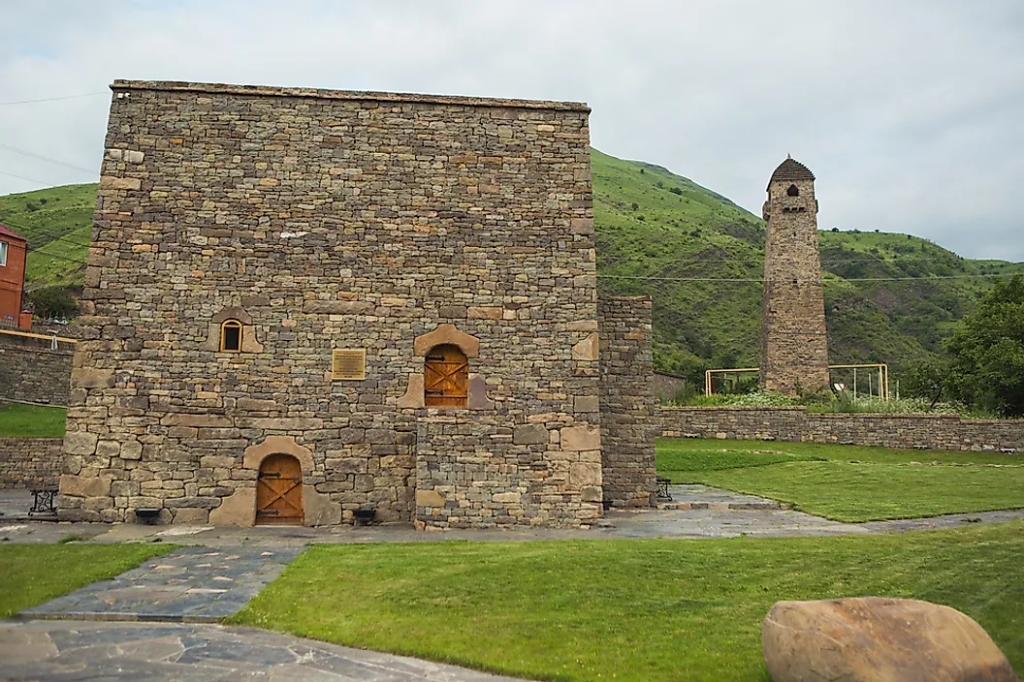
For a long time the Chechens worshipped natural deities, especially the sun-god Malkha-Dela, whose name has become the generic Chechen term for God. In the mountain regions graves are still called sun-graves, and ancient rock art with solar symbols testifies to the cult of the sun. One of the oldest Chechen tukkhum (tribe) is Myalkiy, the “people of the sun”. Other gods revered by the Vainakhs (Chechens and Ingush) include Ziu-Dela (the fire-god), Elta (god of hunting), Tusholi (goddess of fertility) and Erda (goddess of the house). Others were Dika-Dela (goddess of truth), Kchokha-Dela (goddess of peace) and Pkha-Dela (god of place). Chechens still recall a rite of rain to summon the rain-god Khin-Dela. A group of children would go from door to door, among them a boy with a waterproof bag over his head. They would cry: “Send a storm, God of Rain!” The occupants of the house would drench the lad with water and hand out sweets to the children. There is no evidence that Chechnya fostered any links with Christianity in Armenia, Georgia and Caucasian Albania. If they did, any missionary attempts proved as unsuccessful as those of the Arabs seeking to spread Islam in the 7th century.
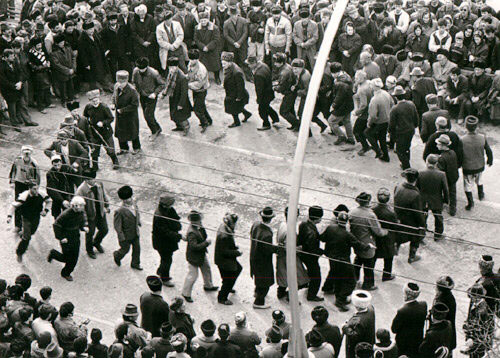
The Nakh peoples, today partly also known as Vainakh peoples (Chechen/Ingush: Вайнахи, apparently derived from Chechen вайн нах, Ingush вей нах “our people”; also Chechen-Ingush), are a group of Caucasian peoples identified by their use of the Nakh languages and other cultural similarities. These are chiefly the ethnic Chechen (including the Chechen sub-ethnos, the Kists, in Georgia), Ingush and Bats peoples of the North Caucasus, including closely related minor or historical groups. Nakh peoples and Vainakh peoples are two terms that were coined by Soviet ethnographers such as the Ingush ethnographer Zaurbek Malsagov. The reasoning behind the creation of these terms was to unite the closely related nations of Chechen and Ingush into one term. The terms “Vainakh” (our people) and “Nakh” (people) were first used as a term to unite two peoples in 1928. It was subsequently popularized by other Soviet authors, poets and historians such as Mamakaev and Volkova in their research. According to the historian Victor Schnirelmann, the terms “Vainakh” and “Nakh” were introduced more actively during the 1960s-1980s periods.
